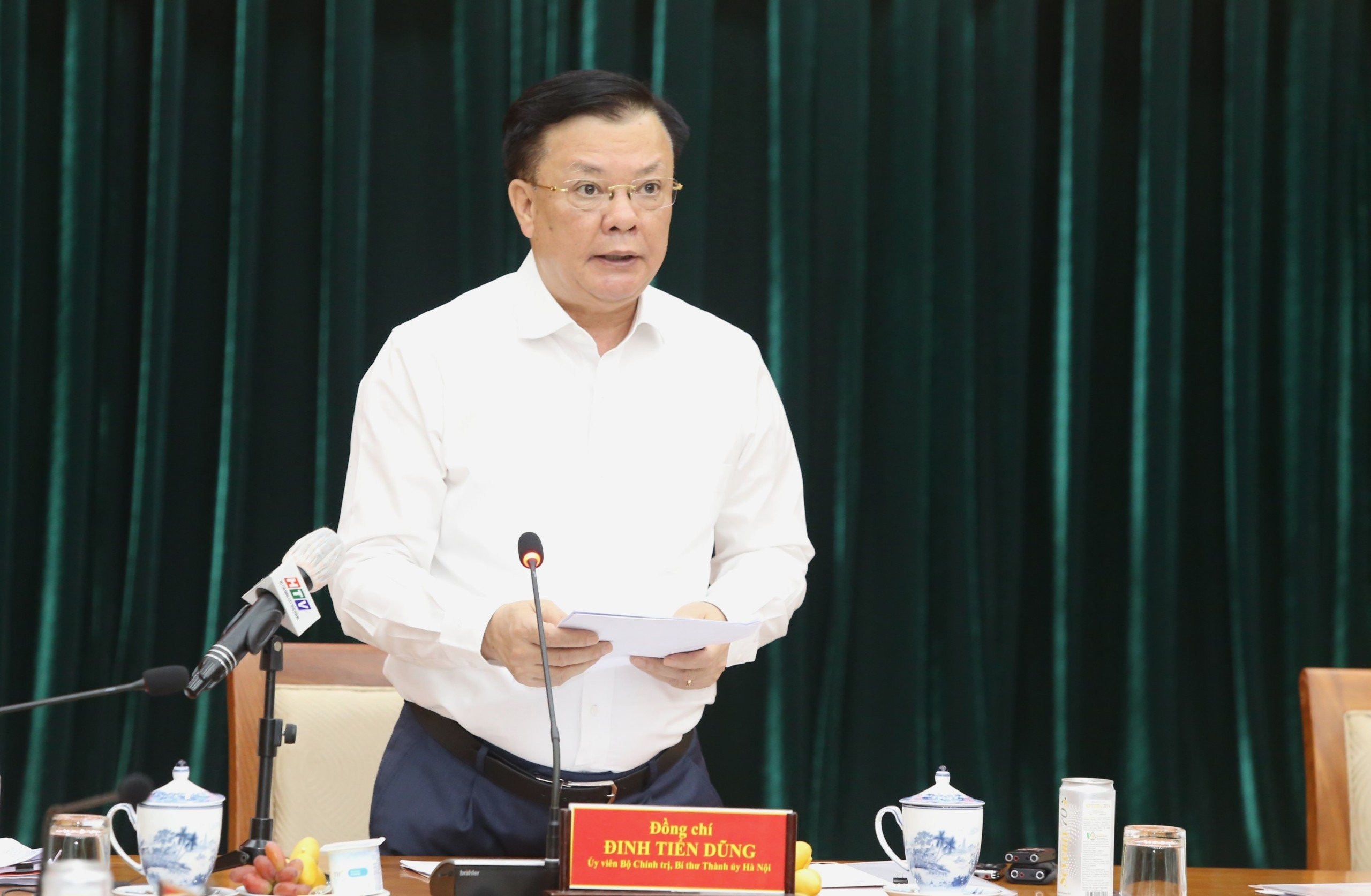
On October 18, the team of Group 6 under the Central Steering Summation Committee had a working session with HCM City on theoretical and practical issues of the socialist-oriented renovation process over the past 40 years in HCM City.
Dinh Tien Dung, Hanoi Party Committee Secretary, and Nguyen Van Nen, HCM City Party Committee Secretary, co-chaired the working session.
Nguyen Tan Phat, Director of HCM City Cadre Academy, said after 40 years of renovation, the country has gained certain achievements.
Phat cited a United Nations’ report as predicting that Vietnam would have 42 million urbanites, or 41 percent of the total population, by 2025, while the figure would be 45 percent by 2035.
Urban government is not only the story of Hanoi, HCM City, Da Nang and other large cities, but also the national public administration institutional model.
“For our country to take off, urban administration and urban governance institution must be seen as the core issue,” Phat commented.
He went on to say that HCM City, Hanoi and Da Nang operate under specific regimes, but there is no law on the issue and the Law on Urban Area has not been enacted yet.
“I cannot understand why we have the Law on Urban Planning, but we still don’t have the Law on Urban Area,” he said. “It is a shortcoming that we have not yet reviewed the implementation of the policies, nor provided theoretical advices to higher authorities for approval."
He believes that it is necessary to promptly set up a regime to operate cities.
Dung commented that over the last 40 years of doi moi (renovation), HCM City has gained important achievements in social, economic and cultural development.
The largest city in the country has maintained high economic growth rates. Particularly, it always tries to explore, create and boldly experiment with new mechanisms and policies to promote production and foster economic development in a sustainable way.
However, he also pointed out problems the city is facing.
The reform of the economic growth model still has not met requirements, and the contribution to the national economy has decreased in some fields. The city's economic growth rate and budget collections have declined compared to the previous period.
Meanwhile, the promotion of resources for economic development has not brought the desired effects. There has been no breakthrough in the urban infrastructure system and infrastructure is not comprehensive enough to satisfy the requirements for development.
“Hanoi like HCM City still has not completed some railway projects after decades of execution. To put the railway lines into operation, Hanoi has to be strongly determined," Dung said.
Another problem that both Hanoi and HCM City face is the school shortage. The capital city now has 2.3 million students with an increase of 45,000 students each year.
“It is extremely difficult to expand and build new schools,” Dung said.
Also, Hanoi is seeking solutions for parking lots in the inner city. The suggested solution is re-planning parking areas and calling for investments to build parking areas with 3-5 stories.
“There are many similarities between Hanoi and HCM City, especially problems,” Dung commented.
He mentioned the development of culture in Hanoi. New cultural and artistic products seem to be lacking, with few works touching people's hearts like in the past.
“When Hanoi realized its problem, the municipal authorities released a thematic resolution on the culture industry development for the city for 2021-2025 period, with s vision towards 2030-2045,” Dung said. “The matter is not just developing culture, but also cultural integration."
He believes that cultural and social development should be harmonized and placed on par with economic development. There are 5,922 historical relics in Hanoi, representing a driving force for development in the future. In addition, the capital city should preserve more than 1,300 craft villages amid urbanization.
He said urbanization is natural for big cities like Hanoi and HCM City. However, both localities need to promote their special qualities and prevent negative phenomena in society.
Dung said both Hanoi and HCM City are both carrying out decentralization. In Hanoi, district authorities are authorized to make decisions on building schools. In the past, the building of high schools had to be approved by municipal agencies.
Dung noted that the goal is within reach for the GRDP (Gross Regional Domestic Product) growth rate of the two cities to account for 30-35 percent of the total national rate, and the two cities' budget collection rate to be 40-45 percent of the total.
Ho Van